
We leave Sofia in the shadow of Mount Vitosha, still snow covered. It is a bit early for me at 0800 and I am barely awake, whilst the guide is somewhat exuberant, giving some kind of commentary, which passes over me like the idle wind. After 20 minutes or so I am aware of an Englishman announcing that he has left his credit cards in the hotel safe. Oh jolly good. Out of sight out of mind. The driver turns the coach about to go fetch. Profuse apologies from the guilty party. I am now wide awake. Coach resumes its route along an old Roman road towards the Bulgarian/Serbian border. Upon reaching the border, we follow a procedure which, with slight variations, will become very familiar over the next days: group emptied out of coach to have passports stamped at exit, walk the few yards across no-mans-land to the next border to have passports stamped on entry.
So now we are in Serbia. We follow the Brotherhood and Unity Highway, instigated by Tito to unify the Balkan states. Hopeful name. The countryside is green and hilly with fruit trees, plums and cherries in particular, planted in many areas. “The fruits are used for making rakija. Very strong”, our young guide informs us. 40% minimum and usually a lot more than that in home distilleries. This is Serbia’s national drink. Imbibed all over the Balkans in fact, at any time of day. Red rooved houses come and go while some birds of prey hover about and a white stork stalks a roadside verge. First stop: “comfort break”. Long queues for ladies’ loos as is usual. Sigh. But the refreshments are good. I try out ‘burek’, a sort of filo pastry snack filled with spinach. Burek comes with all sorts of fillings and is a speciality of the region.
As we motor past Niš, Serbia’s third largest city, our guide informs us that this is the town, then called Naissus, where the Roman Emperor Constantine the Great was born, he who accepted the Christian religion in 312 AD. Constantine it was who, in 330 AD, founded Constantinople, named, as seems to befit emperors, monarchs and dictators, after himself, and who shifted the capital of the Roman empire to the east. “Two other Roman emperors were also born in Niš”, we are informed. And there were seventeen other emperors from present day Serbian territory, the second largest number after Italy itself. Also in Niš is the infamous ‘Tower of Skulls’. Said skulls are of Serbian rebels killed during an uprising against the Ottomans in 1809. “To discourage the others”, says our guide cheerfully.
Some inquisitive member of the group asks about the writing on the signposts. “Ah, here in Serbia, we use both the Roman and the Cyrillic script. Others use maybe just the Roman or just the Cyrillic system,” he explains. “We speak a Slavic language, like the other countries but there are many dialects.” They are not always mutually comprehensible. I glance more carefully at sign posts now and I note also the bombed out buildings either side of the road as we enter Belgrade. Here, the coach parks up and we disembark for a walking tour.
Belgrade
Kalemegdan fortress
Situated high up and overlooking the confluence of the Sava and the Danube rivers is Belgrade’s grand fortress. Begun in Celtic times, continued through Roman times, when the town was named Singidunum, medieval times and so on, the Kalemegdan fortress has been frequently rebuilt, but most of today’s reconstruction dates from the Ottomans, who ruled Serbia until 1867, the later Austro-Hungarians and again after WWI.
The group assembles under a tree, looking down upon the two rivers and the only surviving medieval tower, the Nebojša Tower, variously used as a defensive fort and a dungeon. It is now a museum.
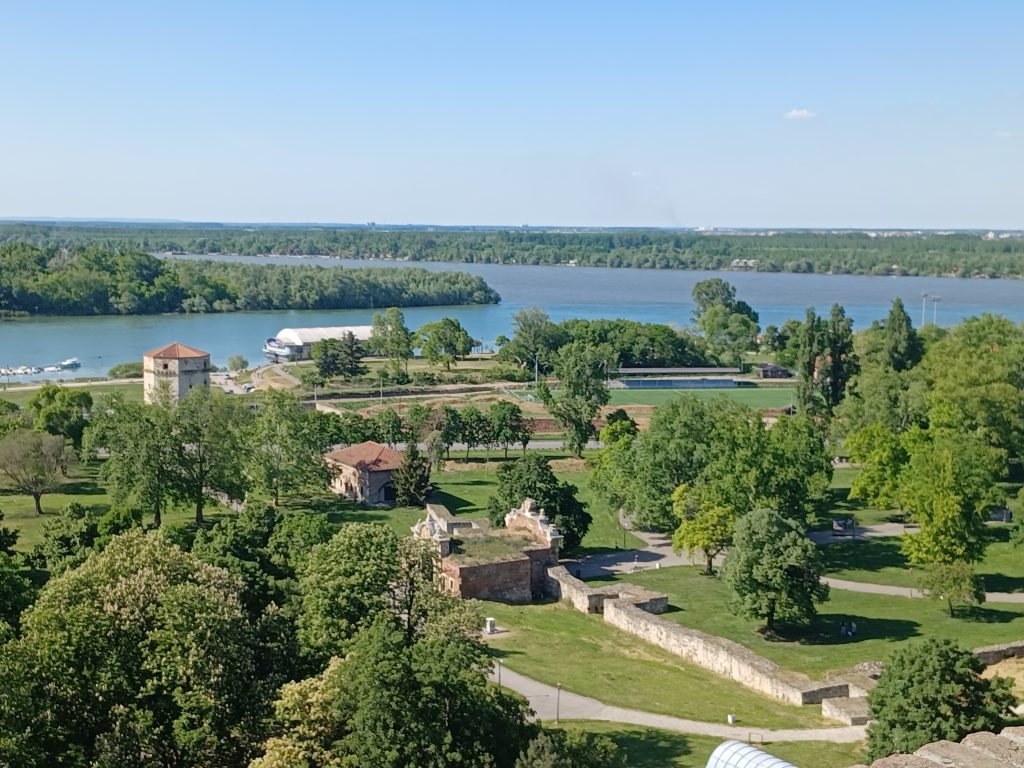
But the most outstanding object of interest at this prominent and strategic site is a humungous statue, ‘The Victor Monument’, portraying a nude Serbian warrior atop a Doric column. It was sculpted out of bronze by Ivan Mestrovic and erected in 1928. Our guide tells us, grinning, that the Victor’s backside faces Istanbul and its dangly bits face Austria and Hungary. The latter “were too big at first. The sculptor had to file them down a bit”. The Victor holds a sword in one hand and a “pigeon” in the other, symbols of war and peace. Quite striking this Serbian warrior is, representing, as he does, the triumph of the Serbs against these former foes.
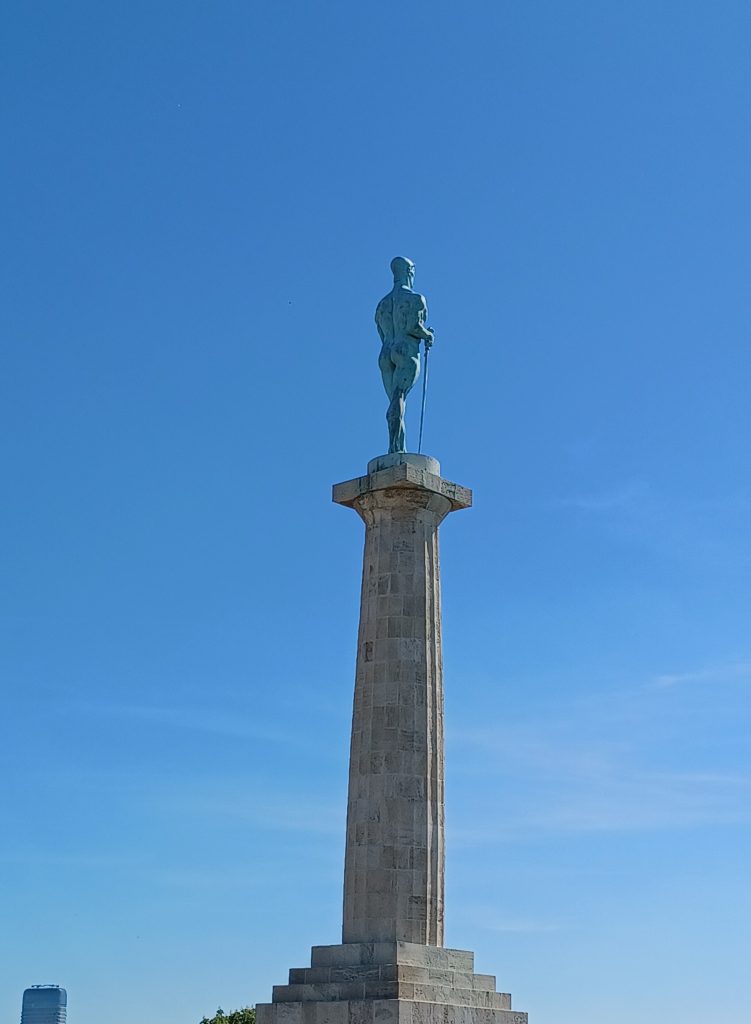
We walk about the massive old walls, on which some gates and towers are still intact. The fortress suffered damage during both world wars and displays of old tanks and armaments from those wars are contained within the fortress, along with the lovely, small but perfectly formed 15th century Ružica or Rose church, a Serbian Orthodox church. This was reconstructed in 1869, then rebuilt after WWI as a result of bombardment of the fortress by the Austro-Hungarian forces. Two models, made of WW1 melted down war materials, of a lancer and a soldier, flank the main entrance.
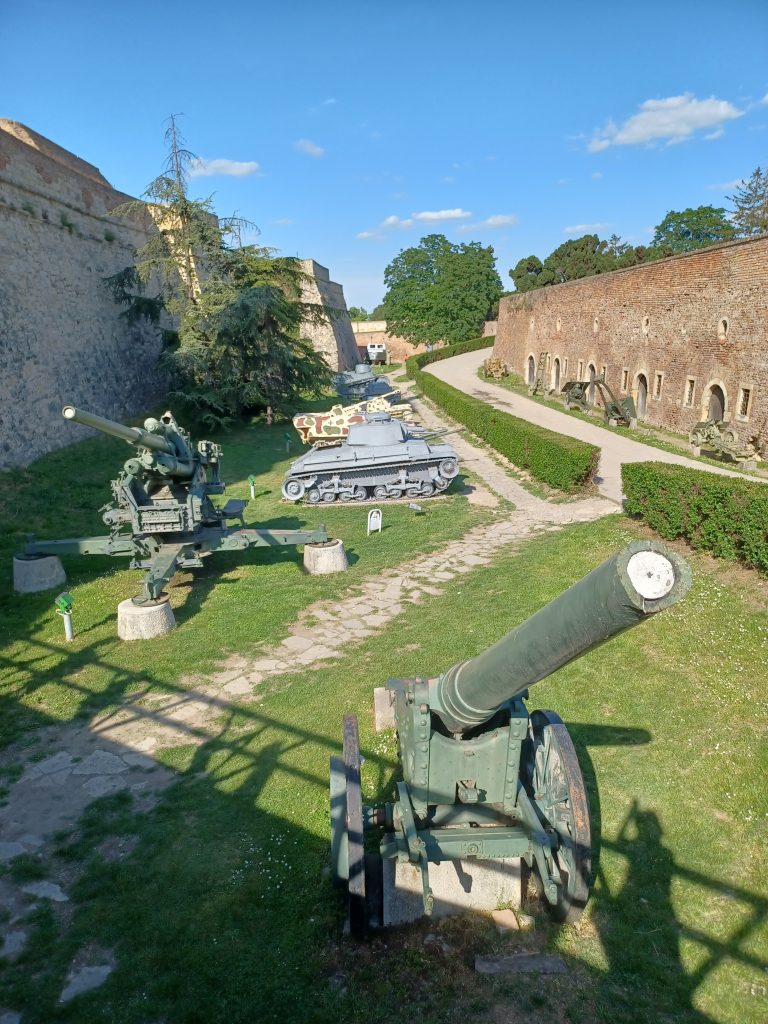
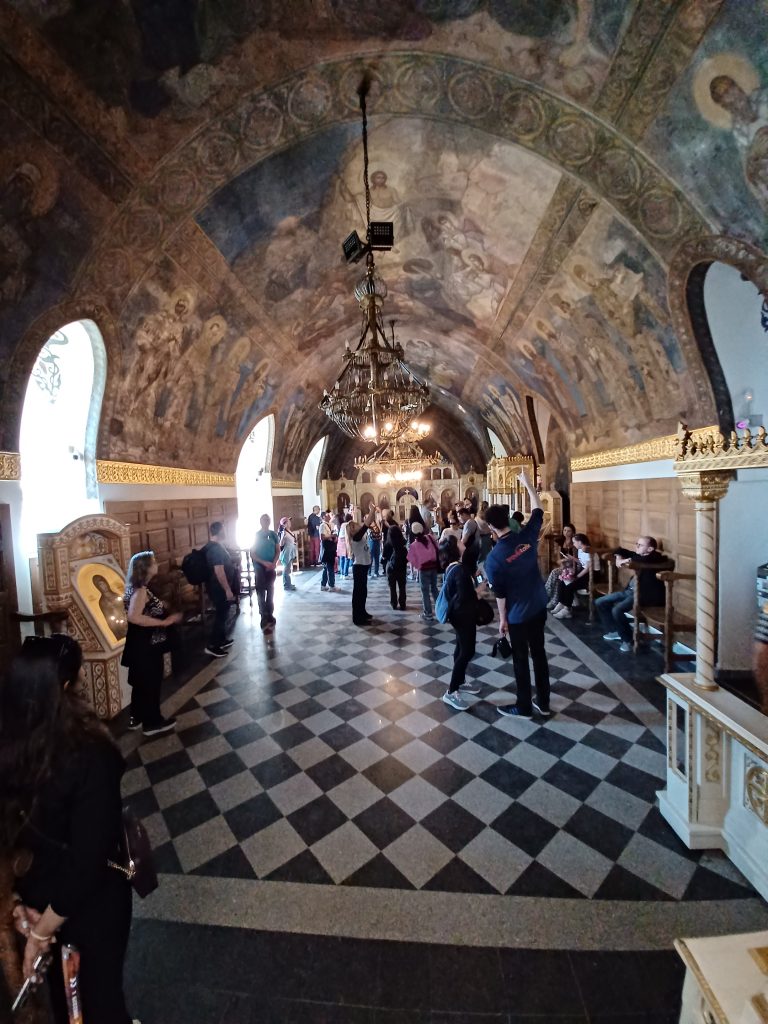
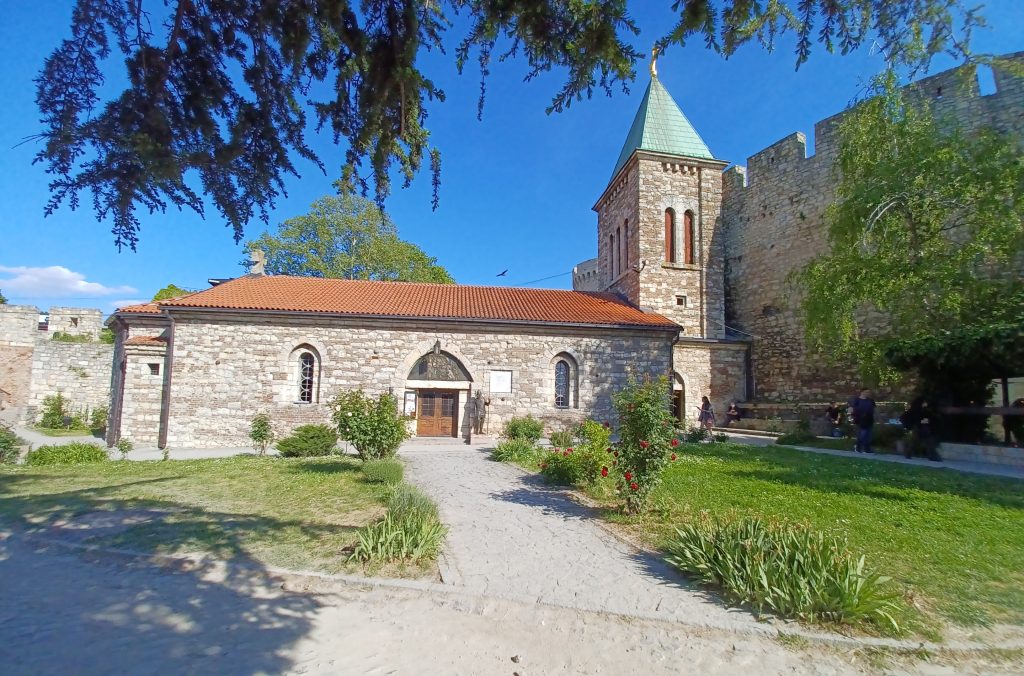
Knez Mihailova
In the adjoining Kalemegdan park throngs of people are enjoying themselves on the trim turf. We dodge between them trying to catch up with our guide, sporting his tour operator lanyard, who is far ahead. He is easily spotted, his long, lanky form and curly hair sticking up above the masses. “You have some free time now”, he says. “Do you all know how to get back to the bus?” Err no. He leads us through the buzzing pedestrianised Knez Mihailova. Named after a Serbian prince and once the central road in Roman Singidunum, Knez Mihailova is full of street sellers, burger and sweets stalls and outdoor cafés. Local performers are dancing on a stage with a concertina in accompaniment, a flautist plays soulfully, and lads and lasses stride by on stilts. Art Nouveau buildings with comical sculpted faces adorning their façades, like those in Riga (See travelogue on Baltic States, Part 2: Latvia), peer down upon the crowd. One of these, the Serbian Academy of Science and Arts features the Greek goddess Nike centre top.
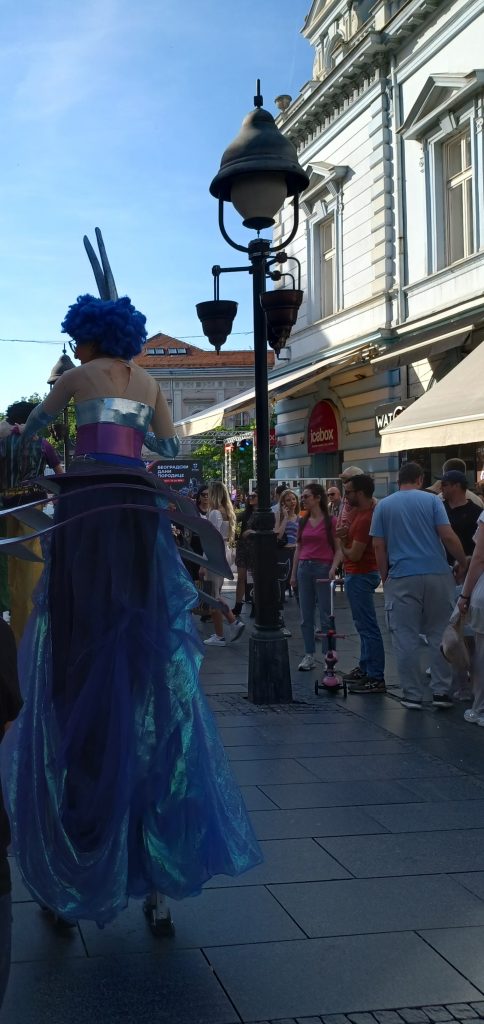
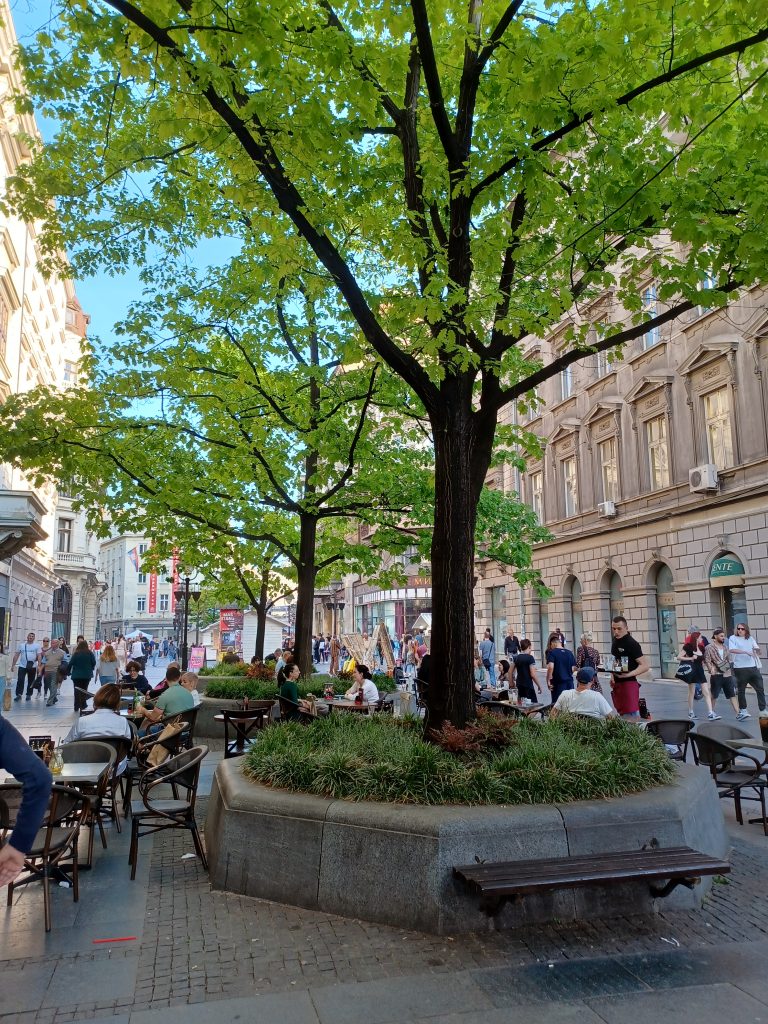
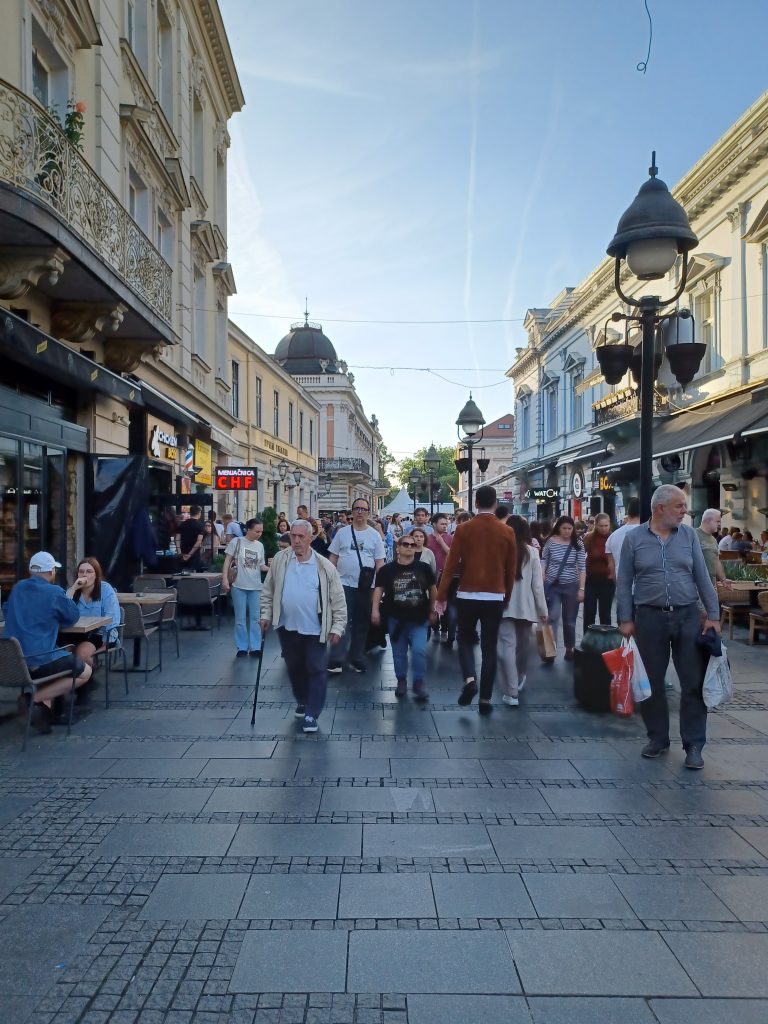
The bus appears, parked on a parallel street. “We meet back at the bus at 7. OK?” “OK”. After these swift instructions we all depart in various ways. Myself down the hill towards the river and peace and tranquillity. A glorious Orthodox church appears close by the lovely Austrian Embassy building. Its clock strikes 5 pm as I head past it.
Reach the river Sava. Two river cruisers are rafted alongside each other on the quayside: ‘Vivaldi’ and ‘William Wordsworth’ sailing under the Swiss flag. Wonder if they have come from France. (See travelogue on France: Waterways of Burgundy). I saw several similar vessels on the waterways there last year. They would have made their way through Germany, the rivers Rhine, Main, the Main/Danube canal and river Danube to reach here in Belgrade. People are relaxing on their aft decks. In the distance, the new Belgrade Tower (Kula Beograd) with its 42 storeys dominates the waterfront. A beacon of modernity and uniqueness, this tower twists by 90 degrees in the middle.
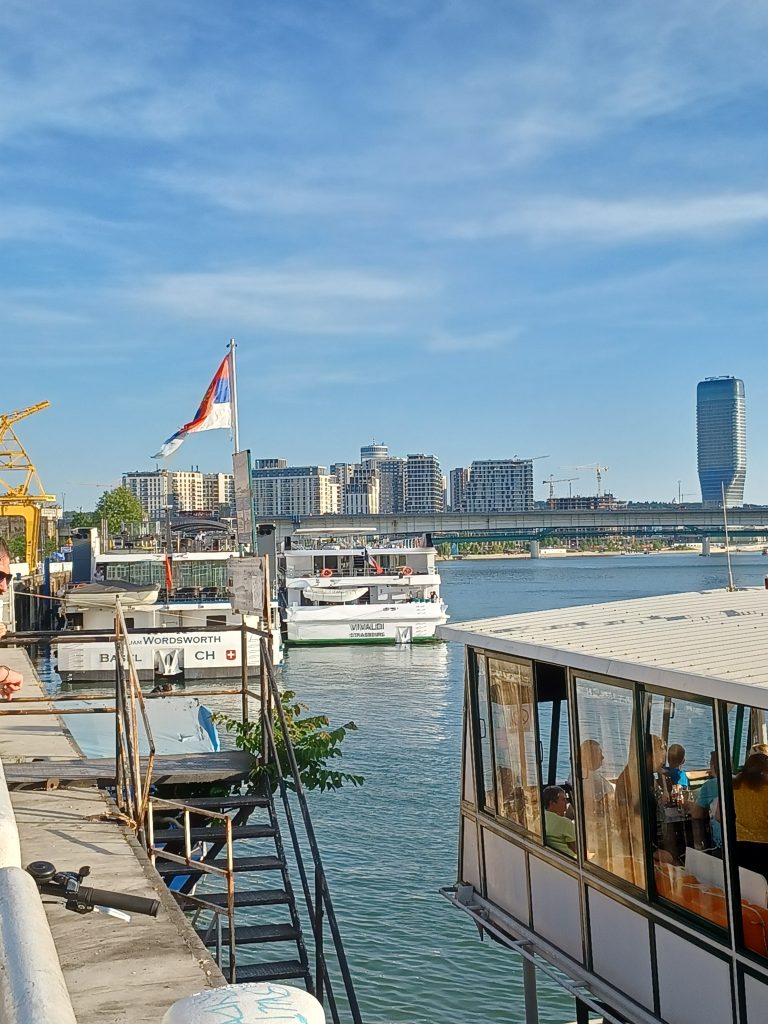
I take a seat in a tempting riverside restaurant where a guitarist is serenading a few customers. Shame about the recalcitrant waiter with the sulky face, but I eventually order some cheery Serbian white wine and sip it slowly ‒ to psyche myself up for the steep steps back up to the upper town. Relax a while.
Feeling slightly mellow, I plod upwards past, I now realise, St Michael the Archangel Cathedral, whose clock is now striking 6 pm. I enter in. The Cathedral, built between 1837 and 1840, drips with golden lights, icons and frescos and a magnificent gold plated carved iconostasis. The clergy are chanting. It is a very important place of worship in Serbia, I understand, containing relics of many Serbian saints. It has been designated as an object of ‘Immovable Cultural Heritage of Exceptional Importance’ by the Serbians.
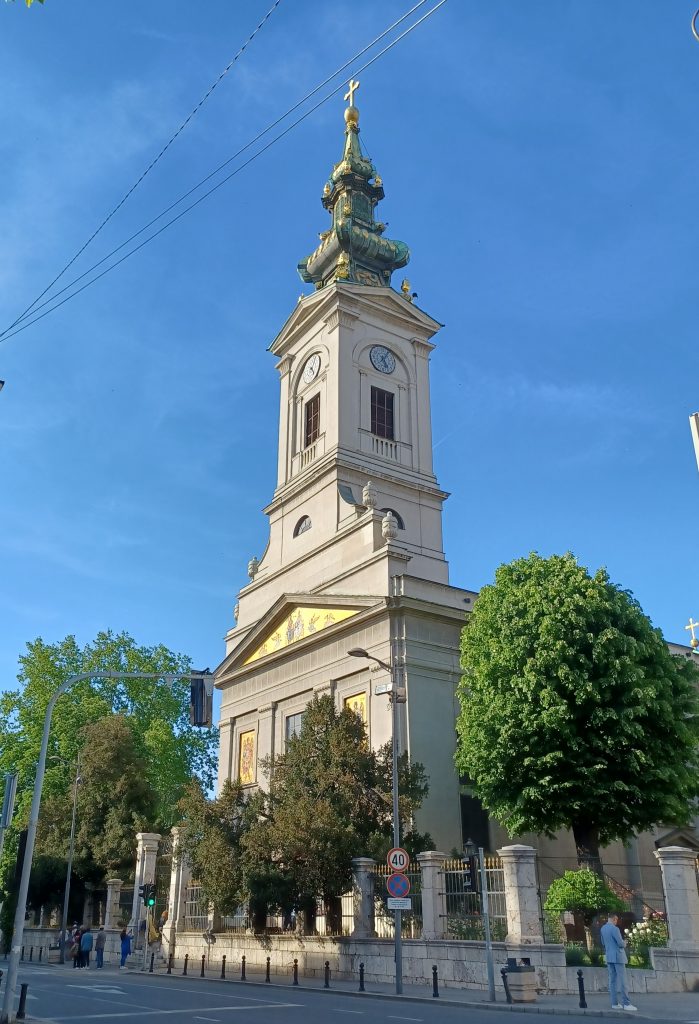
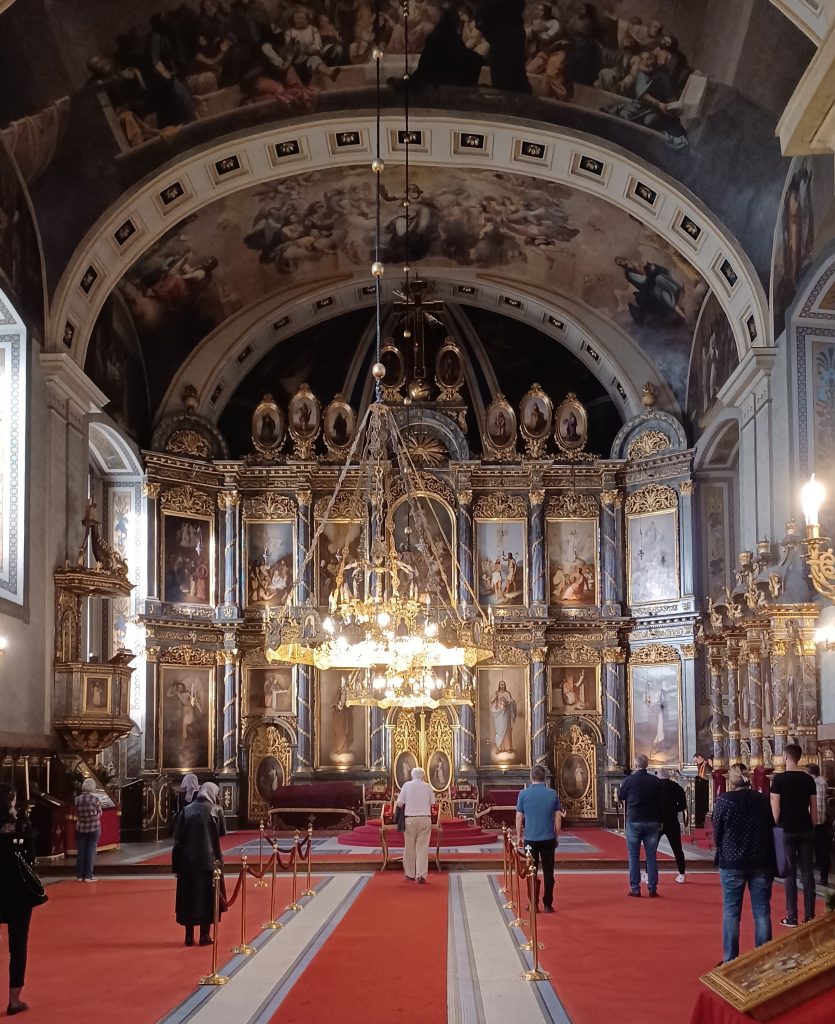
After a spiritual interlude, I wander towards Knez Mihailova and pick up the distinct odour of burgers sizzling on a grill. It is emanating from one of those kiosk sort of places. A lady is cheerfully turning over several burgers at once with a large spatula. I purchase one – a burger I mean ‒ and she smears mustard and another unknown topping upon it. Curious what one eats away from one’s usual environment. It fills a hollow place as I perch upon a bench and watch the world flit by.
Once on the bus heading towards our haven for the night, we are told our hotel is near the prison but we can be assured that the streets here are very safe.
On the road early the following morning we drive past old 1960s blocks and a very large conference centre where, ostensibly, meetings took place between the various Yugoslav factions to try to resolve the Balkan Wars. After driving for what seems an eternity on an endless highway we behold the mountains of Bosnia and Herzegovina beckoning in the distance.

Leave a Reply